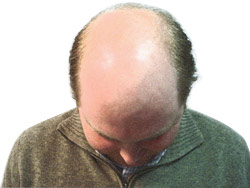Braids and Weaves Could Cause Hair Loss

Hair grooming practices such as braids and weaves could be contributing to the development of permanent, scarring hair loss in African-American women, according to a new study.
Women with advanced central hair loss with signs of scarring, also called central centrifugal cicatricial alopecia, are more likely than those without hair loss to have bacterial scalp infections, Type 2 diabetes and hairstyles associated with traction (like braids or weaves), researchers at the Cleveland Clinic in Ohio said.
"The results of this study suggest that hair grooming practices that cause traction, such as weaves and braids, may be contributing to the development" of advanced central hair loss, researchers wrote in the study.
It's also possible that hair grooming practices and hair loss are a self-perpetuating cycle: The grooming practices may increase prevalence of follicle damage and bacterial infections that contribute to hair loss, but the weaves and braids are then also used to disguise hair loss, the researchers said.
The study was published online April 11 in the journal Archives of Dermatology.
Hair loss correlations
Researchers surveyed 326 African-American women at two African-American churches and a health fair in Cleveland about their family and medical histories, current medical conditions and hair grooming habits. They found that 59 percent of the women had some form of central hair loss, with some cases more severe than others.
Get the world’s most fascinating discoveries delivered straight to your inbox.
Women with the hair loss were also more likely than those without to have bacterial scalp infections. Nearly 20 percent of women with the most advanced kind of central hair loss had a bacterial skin infection, compared with 11.4 percent of all the women in the study (those with hair loss and those without), the study said.
Slightly more women with severe central hair loss used chemical relaxers, braids, extensions, weaves and hot combs than women who did not have hair loss. About 96 percent of women with severe hair loss used chemical relaxers, compared with 91 percent of all the women surveyed in the study, and 57 percent of women with hair loss had braids, extensions or weaves, compared with 47.6 percent of all the women, the study said.
Even though diabetes was not highly prevalent among all the women, it was still higher in the women with the hair loss than the women without the hair loss, the study said. For example, 17.6 percent of women with the most advanced kind of central hair loss had Type 2 diabetes, compared with 8 percent of all the women in the study.
Past research suggests that cicatricial alopecia is a manifestation of metabolic problems, which would also explain why the women in the study with the hair loss had a higher rate of Type 2 diabetes than the women without the hair loss, researchers said.
Factors in hair loss
Advanced central hair loss with signs of scarring is used to describe a type of hair loss that starts at the vertex of the scalp, and then spreads peripherally, according to the study.
"It is thought to be the most common pattern of scarring hair loss seen in African- American women, yet so little is known about its true prevalence among them," researchers wrote in the study.
Braids and weaves are common hair treatments in the African-American community, researchers said. The treatments can be expensive, so they may be left in "for weeks or months at a time to justify the money spent," researchers wrote in the study.
However, this constant traction and tugging of the hair from the scalp can lead to folliculitis (inflammation of the hair follicle) and scarring, the study said.
It's possible that this traction could be contributing to the central hair loss so commonly seen in African-American women, though researchers want to do more studies to see if the use of chemical hair relaxers also contributes to hair loss.
Pass it on: Braids and weaves could be contributing to severe central hair loss with scarring, a common pattern of hair loss seen in African-American women.
Follow MyHealthNewsDaily on Twitter @MyHealth_MHND.
This story was provided by MyHealthNewsDaily, a sister site to LiveScience.



